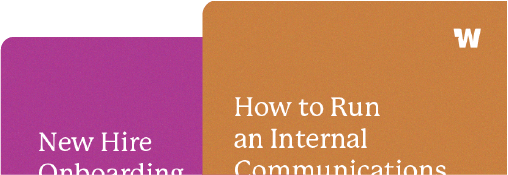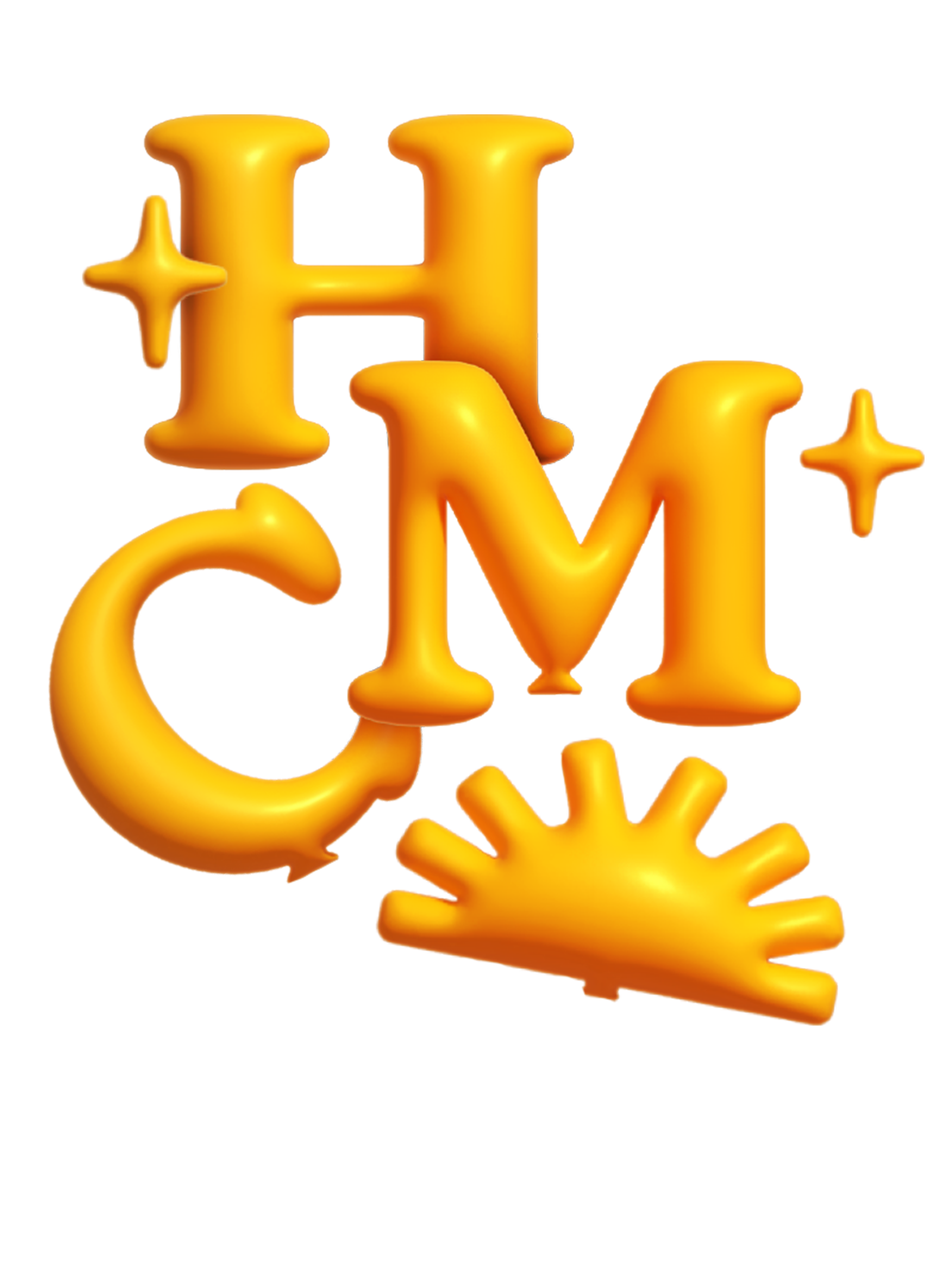20 ideas for creating an engaging employee newsletter
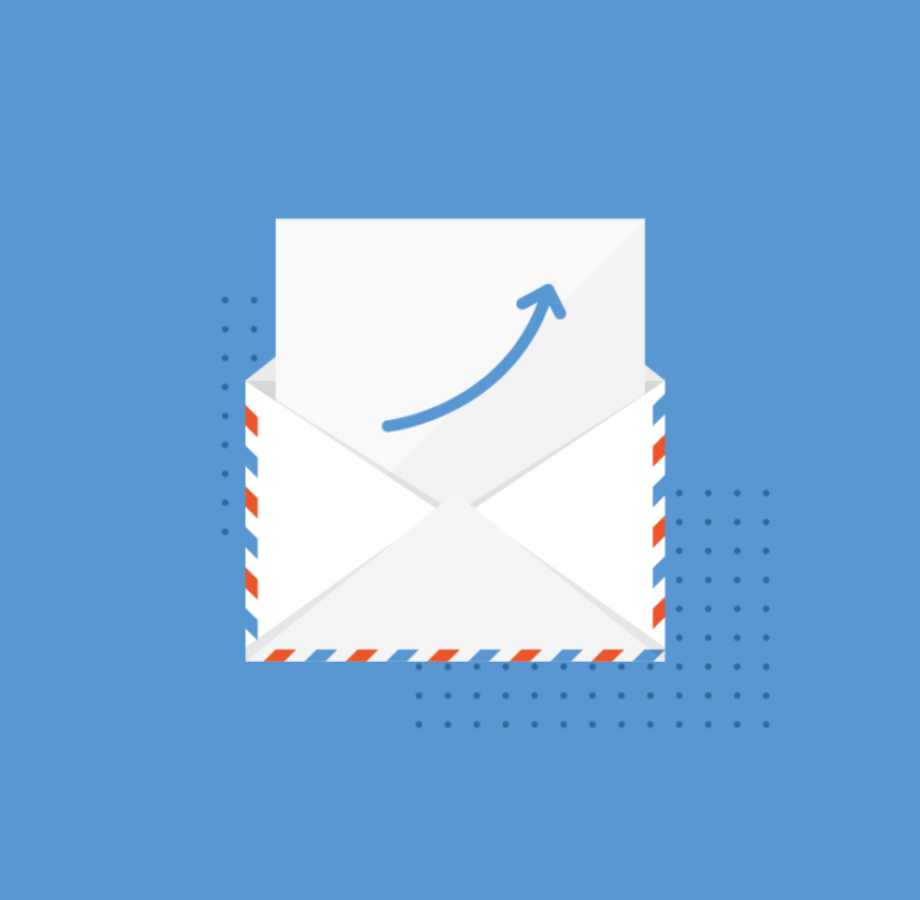
As your company continues to scale, it can be increasingly difficult to keep up with the most important things happening across all of your different departments. Often, your HR/Internal Comms/Marketing team has the challenging job of compiling the most crucial information about your organization in the form of a weekly or monthly employee newsletter…and not only that, but it’s unclear if those employees are actually reading that email or caring about the content (though having great analytics helps). If your team is going to put the time and effort into making an employee newsletter, you want to make sure people will put in the effort to read it!
With that, here are a handful of our top tips to create a more engaging company newsletter!
1.) Give your employee newsletter a compelling title
If you are sending out a newsletter, try to hook your employees right away to show why they should want to read your newsletter. If you name your newsletter “Weekly Employee Newsletter for December 7th, 2020” then you’ll have much less engagement than if you included more relevant information in the title. I bet your team would be much more likely to open something with a title like “3 Things You Need to Know for the Upcoming Holiday Break”. The first title gives you very little information. The second gives you some semblance of what is going to be included in the message and lets your employees know they should probably open it. Remember, just because your employees work for your company, it doesn’t mean they will open a boring looking message.
2.) Use visuals
This one is pretty self-explanatory. Would you rather check out a newsletter that is a wall of text? Or something that is a bit more visually appealing. While you don’t need to hire a professional photographer to take photos for your newsletter, you should try to only use high-quality images. When in doubt, use photos of your employees. A newsletter with familiar faces in it is always more likely to get engaged with.
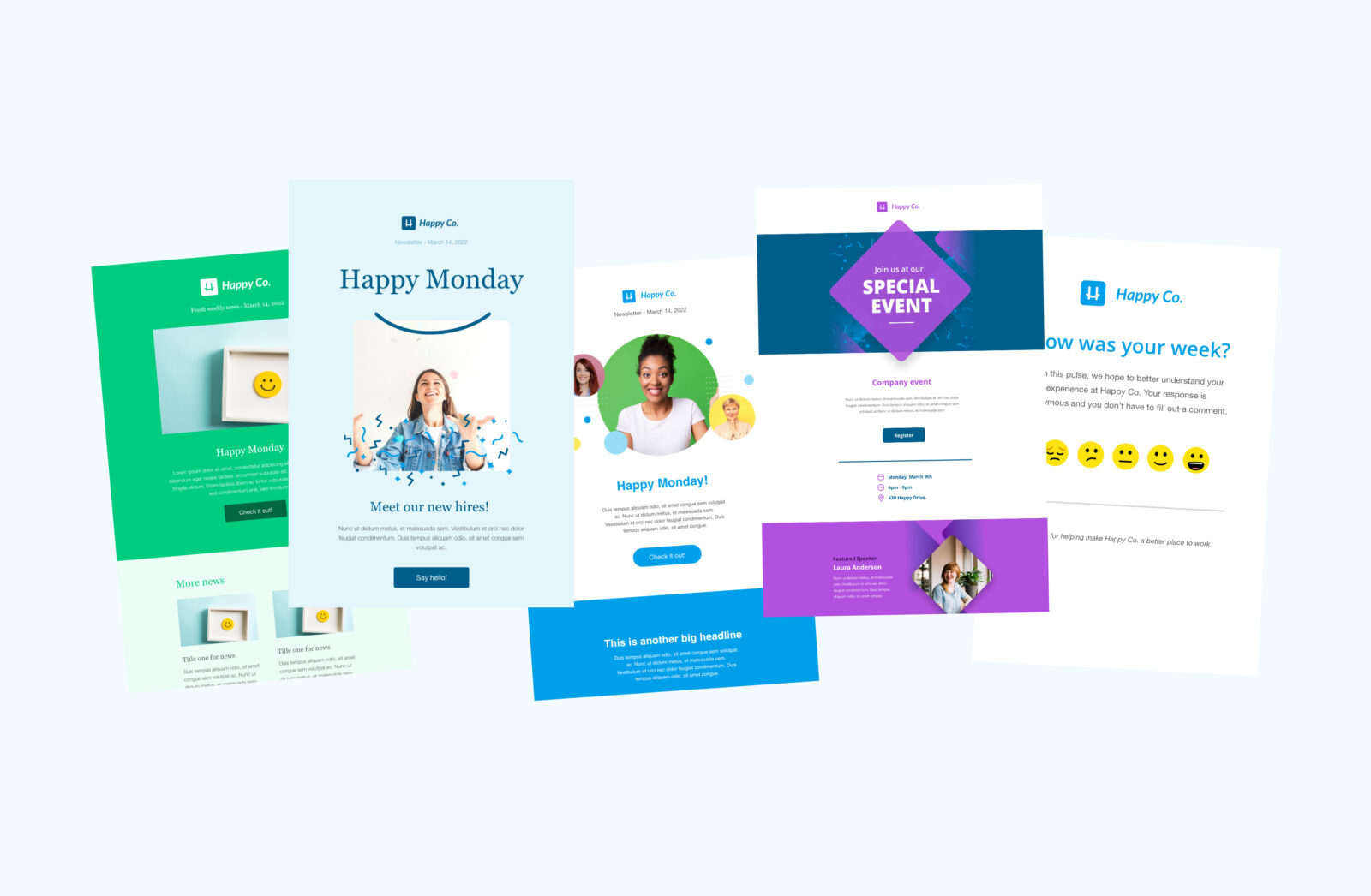
Here’s a look at a few of the employee newsletter and email templates we offer in Workshop! You can see more here.
3.) Send your newsletters at the right time
Like any email, it’s more likely to get read when someone is in front of their computer. Avoid sending the newsletter first thing in the morning or at the very end of the day. Usually mid-morning is a good time to send emails as it gives your team plenty of time to see that day, even if they are tied up in a meeting when you first send it.
4.) Track email metrics
The best way to see if enough people are engaging with your newsletters is to actually track the performance of them. If you see a post that performs better or worse than your expectations, then you can dig into it a little more and try to figure out why. A good rule of thumb is that it’s hard to improve what you can’t measure…but the good news is, newsletters are pretty easy to measure. (Especially when you use Workshop.)
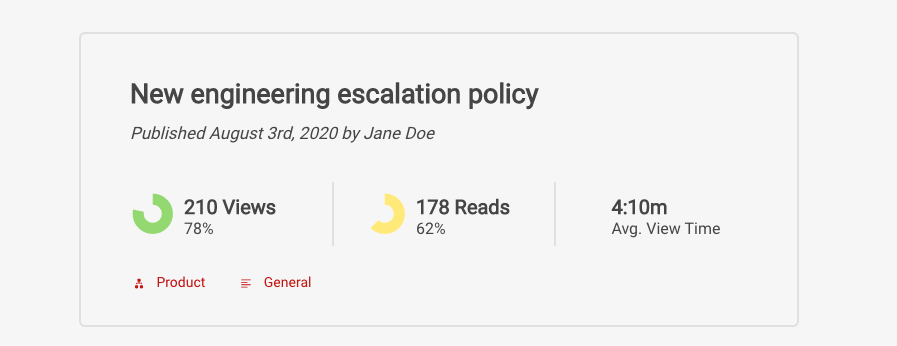
5.) Add some personality
Your employees are much more likely to read the newsletter if it’s written in a friendly and inviting way. If you think of the newsletter as an extension of a personal conversation you’d have with a coworker, it will go a long way in making the newsletter feel more fun to read. Does your company have inside jokes or fun facts that you can share? Make sure to sprinkle those tidbits into your newsletter to make it feel personal and not too stuffy.
6.) Consider segmenting your audience
If you have the capacity, it might be worthwhile to create different segments for different departments or leadership levels as a way to increase engagement. You can recruit department heads to put their own team spin on the weekly or monthly news, and ensure those newsletters are a bit more reflective of their team’s culture and interests. Plus, employees will always read an email sent ‘from’ their department head. 😉
If you are using Workshop to create a newsletter, you can make sure only certain people who are on certain teams get the newsletter. Knowing your audience is the number one thing to keep in mind when writing. The nice thing about Workshop is that you get to pick your audience for every update. Can’t beat that for personalization!
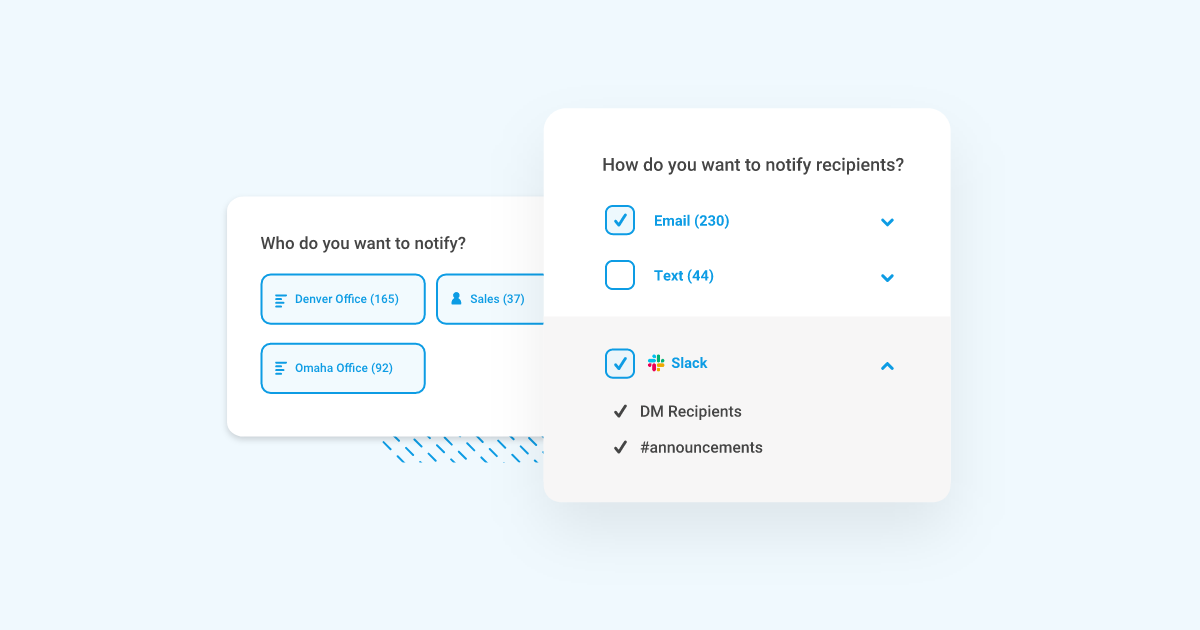
7.) Add an FYI or Did You Know? section
When in doubt, quick informative tidbits are always incredibly helpful for your teams. It’s a lightweight way to address a topic that’s trending in the workplace or offer a quick reminder and a gentle nudge (“Here’s where to go for IT requests” or “Open enrollment ends next week”).
You could also take them down a more entertaining route. We’ve seen a lot of success with highlighting fun facts about employees, like “Did you know? Tony has a tattoo of the company logo on his forearm” or “FYI: Sarah’s now working remotely out of her Winnebago!”
8.) Encourage replies
If you’re sending the email, take this as an amazing opportunity for quick feedback! Think of it as a mini-survey and encourage your employees to reply to a prompted question. It’s an effortless way to create a culture of openness and have your employees offer up their own opinions on a subject.
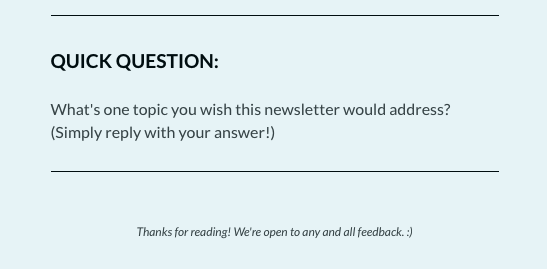
9.) Survey your employees every 6 months
Though we love the ‘quick question,’ it’s great to go in-depth every now and then and ensure that the employee newsletter you’re sending is still delivering value to the audience! Send a short survey every six months or so to gather up content ideas and get suggestions for improvement. It’ll ensure your emails aren’t stagnant, and will allow new employees to help shape the future of the newsletter.
10.) Recap the weekly/monthly/quarterly all-hands
Whether your employees attended that all-company meeting (or not!), your newsletter is a great place to reiterate the need-to-knows or big takeaways from an all-hands session. Adding a few bullet points in an “in-case-you-missed-it” style is an excellent way to make sure the entire company is on the same page and seeing the same vision.
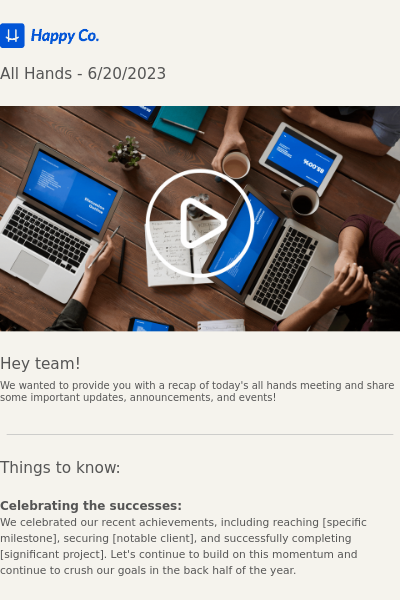
11.) Record a short video
Don’t panic — it doesn’t need to be great quality! We promise. Just shoot a quick video with your iPhone, upload it to the company drive, and add in a link in your email. Video is one of the most engaging mediums out there and it’s a much more innovative way to make an internal announcement.
12.) Highlight recent press
Press can be such a source of pride for any growing company, so make sure to showcase it! It can be as simple as a podcast interview with your CEO or as big as winning an industry award, but anytime your organization is in the news, this is a great place to get eyes on it and encourage your employees to share it on social media.
13.) Celebrate big (and little!) victories
Your employee newsletter is a powerful place to celebrate company, team, or individual wins, so make good use of it! When a team hits a meaningful milestone, adding in written praise can make them feel extra accomplished. The wins don’t always have to be monumental, though; celebrating small wins is an important way to track incremental achievements and show progress toward much larger goals. Plus, it’ll make your culture feel like a positive and always-improving place to be!
14.) Showcase a customer quote or review
When it comes to making your employees proud of where they work, there is nothing that goes further than a glowing customer review or testimonial. It’s our go-to way to keep the company focused on who matters most, and you can find great quotes in so many places: on review sites, in support chats/emails, or in customer surveys.
15.) Add “ACTION REQUIRED” to the subject line (if action is required!)
Used sparingly, adding in a call-to-action in your subject line can be a powerful way to get a need-to-have checked off of your list or encourage widespread adoption. If you are asking each of your employees to do something as a part of that edition of the newsletter, making it crystal clear might be the way to go!
16.) Keep it short and to the point
If you are new to newsletters, we’d suggest keeping it abbreviated from the start and limit your all-company news to 3-5 main modules or topics. This is not the place to communicate everything that’s happened over the last week; just the highlights and the need-to-knows. If you try to pack too much information into it, your teams will stop seeing the value of it and ‘mentally’ unsubscribe…remember, it has to be worth the time it takes to read it.
Also, ensure you’re delivering info that’s best-suited to this particular medium. If you anticipate a topic will generate a lot of questions or concerns, consider saving it for an in-person all-hands meeting; if it requires a lot of finer details, maybe a knowledge base article or training session is the best way to go.
Over time, you can continue to test and iterate on longer-form copy or single-subject newsletters and see which one your employees are responding well to!
17.) Add an incentive
One of our favorite ways to make an engaging employee newsletter is to add secret incentives or ‘easter eggs’ every now and then. Offer a limited-edition company t-shirt at the bottom of the email (so only those who read it can claim it!) or offer up DoorDash gift cards to the first five employees that reply. It’s a clever way to ‘gamify’ your newsletter and reward those who regularly read it!
18.) Bring in a ‘guest editor’
If you’re struggling with constantly coming up with creative content (and believe me, we all get writer’s block every now and again!), then bringing in a ‘guest editor’ or contributor is an easy way to inject some new perspective into your employee newsletter. Get to know your coworkers really well and have them write a bit about their favorite areas of expertise, whether they’re work-related or not! Or, have your department heads share their visions for the upcoming quarter, or ask your creative department for their help in sprucing up your newsletter template. Remember: the best employee newsletters are a reflection of the employees they’re sent to, and not just a single person’s vision.
19.) Double-check the mobile version
Make sure you take a look at your newsletter’s analytics…specifically, whether your employees are opening it on their phones or their desktop. Many people will overlook the mobile version of their newsletter and later find that it was incredibly difficult to read, which would explain a decline in opens or click-throughs. Double-check the format to be sure that it looks good across all devices. (All of Workshop’s emails are built to be responsive and mobile-friendly!)
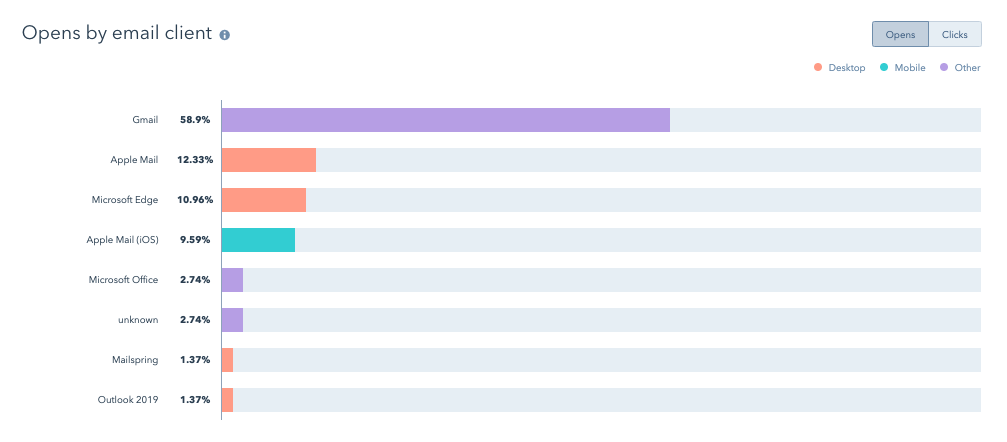
20.) Tap into your company’s cultural history
One of the easiest ways to make your employees feel connected to the company is to remind them of historical moments from the organization’s past. Whether it’s a classic story of a company inside joke, an anniversary, or a photo from the last all-company retreat, you can use your newsletter to remind your employees of where you came from, and get them excited about where they’re going.
21.) Use internal email & newsletter software
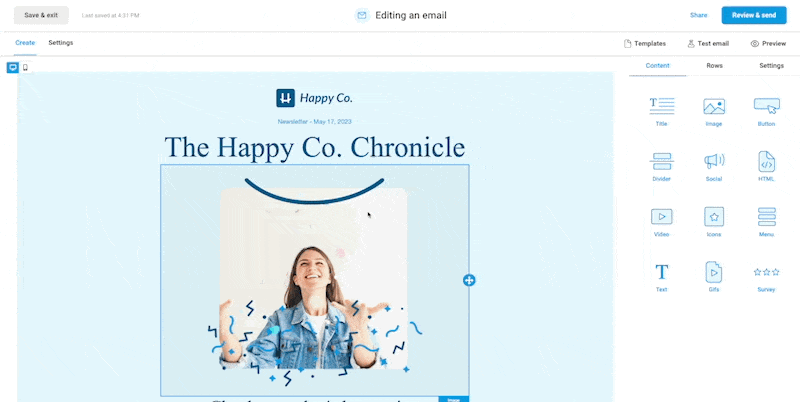
If you’re struggling with any part of the employee newsletter process, we’re here to help. Workshop is designed to help you create exceptional internal newsletters, engage your employees, automate your work, and measure your results. Featuring pre-designed templates, custom distribution lists, scheduled sends, embedded videos/GIFs, and robust analytics, Workshop makes it easy to communicate effectively with your team (wherever they may be).
The next step:
Learn more about Workshop and schedule a demo here!
No matter what you do with your employee newsletter, the number one thing to do is keep testing and iterating on the newsletter to see what works and doesn’t work. Over time, you’ll get it really dialed in and create a newsletter that your employees anticipate getting every week.
